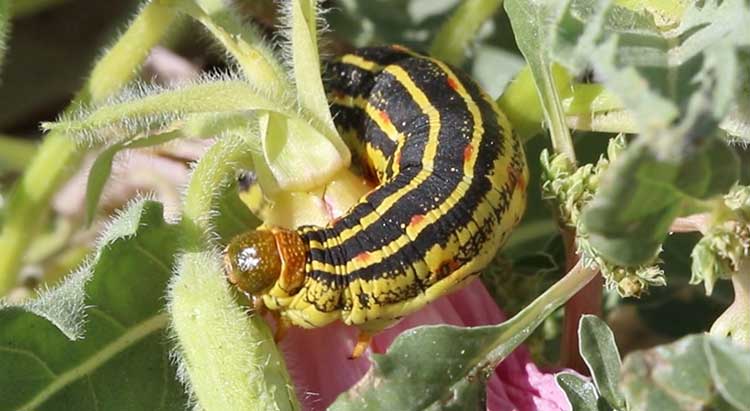Caterpillars are those little, crawling creatures we often see in gardens or on leaves. But have you ever wondered what they do in the big cycle of nature?
Caterpillars, like the yellow caterpillar, are not decomposers like fungi or bacteria.
Decomposers are like nature’s recyclers; they break down dead cells, like leaves and old plants, into tiny pieces to make the soil healthier.
Caterpillars, on the other hand, are more like plant eaters. They have bright colors to warn predators that they might not taste good.
Others have patterns that help them blend into their surroundings, keeping them safe from harm.
They munch on leaves and plants to grow big and strong, eventually turning into butterflies or moths.
Why Things Decompose
Stuff rots and falls apart slowly. This occurs because small living things, such as tiny bugs and caterpillars, munch on the plants. These little creatures aid in changing old things into plant food and things that other creatures can use. If there were no rotting, our planet would be packed with garbage.
So, decomposition is a good thing because it cleans up the mess and lets nature reuse old things. It’s like nature’s recycling program, ensuring nothing goes to waste. A Compost Bin can be a crucial tool in facilitating this natural process.
Primary Diet of The Caterpillar
Caterpillars really enjoy eating leaves. They munch on them all day long. Munching helps them become large and powerful. Their most liked foods are usually the leaves from the plants they call home. Caterpillars have a big appetite because they need to get bigger. They eat so much that they can become quite plump. These little creatures are fascinating to watch as they eat and grow.
If you ever see a caterpillar, take a moment to observe it. You’ll be amazed at how much they eat and how quickly they can change into something entirely different. They upgrade themself from a leaf-loving muncher to a graceful flyer.
Are Caterpillars Decomposers?
Caterpillars are not decomposers. They are actually consumers. They eat plants, but they don’t help break down dead things like decomposers do. Decomposers are like nature’s recyclers. They work to turn old, rotting stuff into nutrients for plants to use. Caterpillars have a different job in the ecosystem. They munch on leaves and stems, which helps control plant growth and keeps the environment balanced.
So, while decomposers have an important role in cleaning up the earth, caterpillars have an important role in maintaining the health of plants and the environment. So, you see, caterpillars and decomposers have different jobs, but both are important in their way.
Is a Caterpillar a Producer, Consumer, or Decomposer?

Caterpillars are hungry creatures. They munch on plants to get their power. They’re crucial in the food chain. They give food to other animals, like birds and spiders, which are higher up. When caterpillars eat plants, they grow big and strong. They have special jaws to chew the leaves. Some caterpillars have bright colors to warn other animals that they taste bad.
After a while, caterpillars change into butterflies or moths. They get wings and fly around, sipping nectar from flowers. Butterflies and moths are beautiful and make gardens more colorful. So, caterpillars may seem simple, but they have an important role in nature. They help plants and other animals survive. And when they become butterflies, they bring joy to our eyes.
Different Decomposers

Decomposers are different in how they look. Some are really small, like bacteria and mold. You can’t even see them without a microscope. Others are bigger, like earthworms and beetles. These tiny creatures have a big job.
Their job is to break down things that are no longer alive. When they do this job, they help the environment. They take old plants and animals and turn them into something useful. This helps new plants grow and keeps the earth clean.
So, even though some decomposers are super tiny and some are quite big, they all have a really important job. They ensure nothing goes to waste in nature, and that’s pretty cool.
Habitat of The Caterpillar
Caterpillars live in different spots. They live in gardens, forests, and sometimes in your backyard. They stay near their food, which is often plants. These little creatures come in various shapes and colors. Some are green; some are brown. They munch on leaves and grow bigger. It’s fascinating to watch them change. After a while, they become butterflies. Butterflies are pretty insects that fly around. They’re colorful and make gardens look nice.
So, if you ever see a caterpillar in your garden, remember it will turn into a beautiful butterfly one day. Isn’t that cool? Nature is full of amazing things to find, and caterpillars are one of them. If you want to learn more about butterflies, you might enjoy a Children’s Book about Butterflies.
Conclusion
So, a caterpillar is not a decomposer. Caterpillars are baby insects that eat leaves and plants. They are not involved in breaking down dead things. They munch on leaves and plants, and that’s their job.
Caterpillars are part of a bigger cycle. They eat plants, grow bigger, and eventually become butterflies or moths. These insects play an important role in nature, helping with pollination. That means they help plants make new plants. So, they are just hungry little creatures that eat leaves and grow into beautiful butterflies or moths.
Nature has many different jobs for its creatures, and caterpillars have a special role to play.
Be sure to check out these other posts for more fascinating insights:

